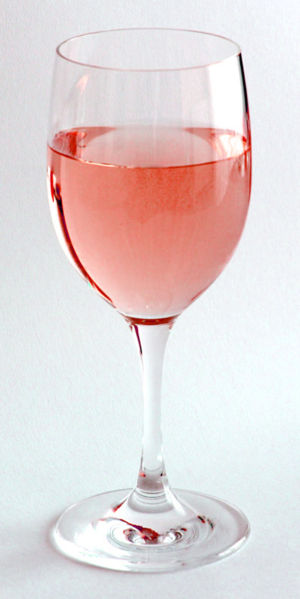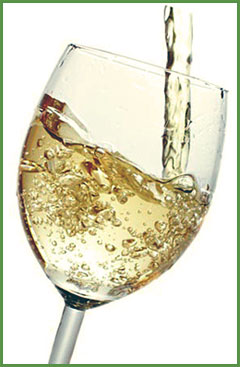Terms:
Tannin-
Any of various compounds, including tannic acid, that occur naturally in the bark and fruit of various plants, especially the nutgalls, certain oaks, and sumac. Tannins are polyphenols, and form yellowish to light brown amorphous masses that can be powdery, flaky, or spongy. They are used in photography, dyeing, in tanning leather, in clarifying wine and beer, and as an astringent in medicine. Tannins are also an important ingredient in tea.
Dry-Not sweet as a result of the decomposition of sugar during fermentation. Used of wines.
vat-A large vessel, such as a tub, cistern, or barrel, used to hold or store liquids.
fermentation- The anaerobic conversion of sugar to carbon dioxide and alcohol by yeast.
Decanter- stoppered bottle, usually of glass, into which a drink, such as wine, is poured for serving
What is wine?
 Wine is made by fermenting either grape juice or crushed freshly picked grapes. After the grapes have been gathered from the vines, they are crushed to produce the 'must' or grape juice, which runes off into huge vats. It is these that the fermentation begins, a process that takes between one and three weeks. The natural sugar in the grape juice is converted to alcohol by the yeast that occurs naturally on grape skins. The alcohol produced is up to a maxium concentration of 16%. The percentage of alcohol is printed on the label of each bottle.
Wine is made by fermenting either grape juice or crushed freshly picked grapes. After the grapes have been gathered from the vines, they are crushed to produce the 'must' or grape juice, which runes off into huge vats. It is these that the fermentation begins, a process that takes between one and three weeks. The natural sugar in the grape juice is converted to alcohol by the yeast that occurs naturally on grape skins. The alcohol produced is up to a maxium concentration of 16%. The percentage of alcohol is printed on the label of each bottle. Types of wine
Red wines come from black or purple grapes that are fermented with their skins and stalks. It draws its color from its skin. The skin also provides tannin, which is a taste enhancer and preservative and natural pesticide. Most red wines are fermented until most of all the sugar is gone leaving them with a dry taste.
Rose wine are made from fermenting black grapes. The stalks are not used and the juice is separated when disired pinkness is achieved. Alternatives is red and white grapes together.
White wines are made form white grapes, green or black. All grape juice is intially colorless. When black grapes are used the juice is removed form the skins. When white grapes are used, the skins are left in the juice for a while. Sweet wines are resulted from the fermentation being stopped before all the sugar is converted.
 Sparkling wines are sparkiling because they are bottled before final fermentation is finished. Some fo the carbon dioxide produced is trapped in the bottle and remains dissolved in the wine until the bottle is opened.
Sparkling wines are sparkiling because they are bottled before final fermentation is finished. Some fo the carbon dioxide produced is trapped in the bottle and remains dissolved in the wine until the bottle is opened. Vintage wines refers tot he year that the grapes were harvested and bear a date on the bottle. Most wine guides indicate which is vintage and when it will be ready to be consumed.
Vintage wines refers tot he year that the grapes were harvested and bear a date on the bottle. Most wine guides indicate which is vintage and when it will be ready to be consumed.Flavors and Characters:
Cabernet Sauvignon- blackcurrant - fruity flavor
Gamay- does not keep well, light
Grenache- light and fruity, keeps well
Merlot- plum, damson, fruity
Nebbiolo- soft mellow prune
Syrah/Shiraz- heavy, raspberry, keeps well
White:
Chardonay- dry , keeps well, melon, pineapple
Chenin Blanc- medium to dry sweet, apple, keeps well
Gewurtz-Traminer- spicy, dry to slight sweet, does not keep well, tropical fruit like lychee
Muller-Thurgau- new varieties, flowery soft
Muscat- Dry from Alsace, sweet elsewhere, high in alcohol
Riesling- medium to dry, desert wine, keeps well, peach and apricot
Sauvignon Blanc- Dry , aromatic, gooseberry
Food selection:
There are many foods listed , but you will have to read the book for the full foods list. I am only lsiting a few.
Soups- Marsala, sherry, or Madeira
Pasta creamy- dry crisp wine
pasta meat- medium red
pizza- light to medium red, chianti
quiche- white alsace
fish- white fish , grilled or poached- light dry white, chardonnay
salmon- white burgandy
Red meat- medium- bodied red, californian zinfandel
lamb- light or medium bodied red, cabernet sauvignon
chicken- medium bodied dry white, rose or light red
turkey- spicy white, dry rose or light red
Storing your wine:
Ideally wine should be stored in a cellar with a northerly aspect free from vibrations, draughts, odours, and dampness. The temperature should be 55 f or 12.5 c. Wines should be stored on their sides so that the cork remains intact. This keeps it expanded and prevernts air form entering the wine. White and rose wines need to be stored in the coolest position, nearest the ground. Whatever you do, make sure your wines are out of the sunlight and away form heat sources , heat will rapidly damage the wine.
Serving your wine:
Glasses: Wine galsses should be stemmed. The bowl should havea narrow top and a wide braod base, to concentrate aromas. Glasses should be washed in plain hot water and dried with a clean cloth. A fresh glass should be used with each wine served.
Temperature allows the wine a chance to be is greatest.
Type- degrees in F- Hours of Refridgeration
Light sweet wines- 41-43 f- 4 hours +
sparkling-41-43f- 4+
light dry wines-48-50-2
sparkling red-50-54-1.5
medium-bodied whites-50-54-1.5
full sweet whites-46-50-2
light reds-50-54-1.5
full dry whites-54-57-1
medium reds-57-61-0
full-bodied red wines-59-64-0
Add salt and ice to a bucket to speed the chill of wines. Champange and sparling white and rose wines need to be in a wine bucket containg ice and water to the bottles neck. Red wine is fine but if it is too chilled use a decanter that has been warmed by water.
Glasses should be filled at 2/3 of the way, and replenish when 2/3 empty. When pouring the wine rest the neck of the bottle over the glass and twist the bottle as it is taken away to prevent drips.
Decanting the wine is used to give the wine's sediment a rest at the bottom. It improves appearence and allows the wine to breathe. This should take about 2 days for the sediment to decanter. To see if the sediment is coming out of the bottle use a lit candle in behind the wine bottle's neck.
My favorite is a dry Champagne, but thats me.
In moderation, a glass or two of wine can help your heart, prevent cancer and more.
Resveratrol is the component in wine that works as a powerful antioxidant, and the one that scientists and medical professionals are currently studying. Unfortunately, you would need to get a very high dose of wine – practically gallons – to get a high enough dose of resveratrol. Sadly, drinking that much alcohol is harmful to your health, however, there are recent studies that say moderate wine consumption for women may be healthy for the heart. Women Wine Drinkers Have Fewer Kidney Stones. Moderate wine consumption cuts stroke risk. Moderate Alcohol Consumption Protects Against Atherosclerosis. Cohort Studies From Around the World Link Moderation to Longevity. As early as 1980, the Honolulu Heart Study reported that moderate alcohol consumption was associated with a 50% reduction in the rate of coronary heart disease.
Benefits of wine to you
Wine-Companion-and-Record-Book - do not buy this book used
thefreedictionary
The Wine Companion and Record Book-Four seasons publishing
thedinnertoast.com
ventanamonthly.com
scentedsalamander
anotherwineblog
ehow.com/sparkling-wine
shamimahossainathina.com
skinnychef.com
Random bookmark: zamzar




No comments:
Post a Comment